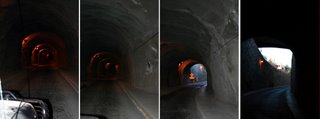 Although we’ve been here almost a month now, we’ve (I've!) been taking time to get to know Guanajuato, the intellectual ignition site for the fires that stoked the 1810 Mexican war for independence from Spain. Home to what was once “the” university of the arts (now UNAM in Mexico City has largely taken over as the more prestigious learning hub), music and paintings and street theater still can be found the city’s central streets at most hours of the day – many of which are pedestrian-only and packed with students doing their student things. The callejones (street-lets) climb their way up from the semi-central plaza Jardin Union (bright green triangle in front of the Cathedral and the Teatro Juarez in the photo above) to the edges of the ravine that the whole city is essentially nestled into. The whole place has this incredible quality to it whereby just a few square miles seems to have an infinite amount of surface area – buildings stacked on top of one another as they cover the steep sides of the canyon, with seemingly a billion churches and plazuelas and plenty of dead-end alleys to get lost in...
Although we’ve been here almost a month now, we’ve (I've!) been taking time to get to know Guanajuato, the intellectual ignition site for the fires that stoked the 1810 Mexican war for independence from Spain. Home to what was once “the” university of the arts (now UNAM in Mexico City has largely taken over as the more prestigious learning hub), music and paintings and street theater still can be found the city’s central streets at most hours of the day – many of which are pedestrian-only and packed with students doing their student things. The callejones (street-lets) climb their way up from the semi-central plaza Jardin Union (bright green triangle in front of the Cathedral and the Teatro Juarez in the photo above) to the edges of the ravine that the whole city is essentially nestled into. The whole place has this incredible quality to it whereby just a few square miles seems to have an infinite amount of surface area – buildings stacked on top of one another as they cover the steep sides of the canyon, with seemingly a billion churches and plazuelas and plenty of dead-end alleys to get lost in...
As for our lovely little apartment on el Callejon del Infierno (Hell’s Street-let)… Our landlords/hosts have decorated it with finds from the antique markets not too far from here (but the coffee maker is brand new - We’re the first tenants!). The ceilings are high and covered with the original wooden beams, the apartment faces a giant old tree that fills with little parrots of some kind at around 4 every evening…it’s been a great space to work on my thesis and Spanish grammar from, despite the few little scorpions that have also decided to take up reidence - there's nothing like the sound sof two scorpions calling to each other inthe middle of the night to give you goosebumps! so far though, no real run ins of any significance. They don't replace koji though - just not the same to come home to a house without a dog :(
 Let's see...well, for those of you wondering (Glen!), having the truck here has been...absurd! When Kraig is not on the chile hunt and he's in town (only a few days of the last three weeks) we park it and leave it and don't even think about moving it. Although wrangling a parking spot is another matter entirely - sometimes a several hour endeavor...we wait... and wait... and prowl the street, hoping that someone will leave (or two cars since most vehicles here are tiNy - with good reason, the streets are tiny too!). Then, one of us races to the spot and tries to look fierce enough to not let the other parking prowlers take it...usually that works, but not always! In any case, we’ve had no vehicle problems at all (knocking on wood) , except for a parking ticket once and the mysterious “laveme” messages that keep getting scrawled in the dirt on the back windows…hmmm…
Let's see...well, for those of you wondering (Glen!), having the truck here has been...absurd! When Kraig is not on the chile hunt and he's in town (only a few days of the last three weeks) we park it and leave it and don't even think about moving it. Although wrangling a parking spot is another matter entirely - sometimes a several hour endeavor...we wait... and wait... and prowl the street, hoping that someone will leave (or two cars since most vehicles here are tiNy - with good reason, the streets are tiny too!). Then, one of us races to the spot and tries to look fierce enough to not let the other parking prowlers take it...usually that works, but not always! In any case, we’ve had no vehicle problems at all (knocking on wood) , except for a parking ticket once and the mysterious “laveme” messages that keep getting scrawled in the dirt on the back windows…hmmm…So, here you have our version of Guanajuato so far. As the magic thesis fairies have just made my thesis go away until i return to Davis to go over drafts, I’ll allow myself to venture out for more than my daily Spanish tutoring session to explore more of the city and surrounding towns – just in time! ...we leave for Mexico City at the end of the week and then on to Argentina for more culinary adventuring and southern chile hunting and penguin gawking!
(…I just had to include this photo of the local meat source. Can’t say it isn’t farm fresh!)















































